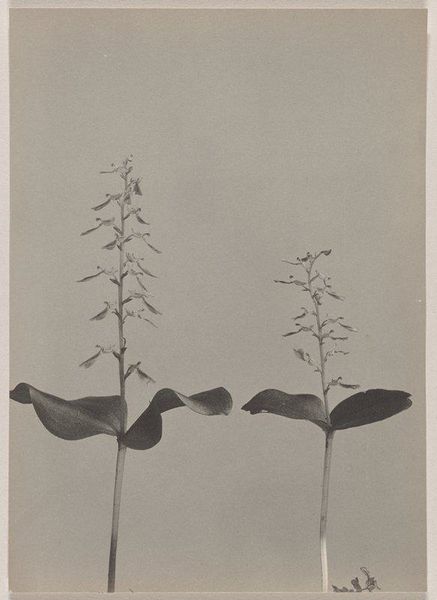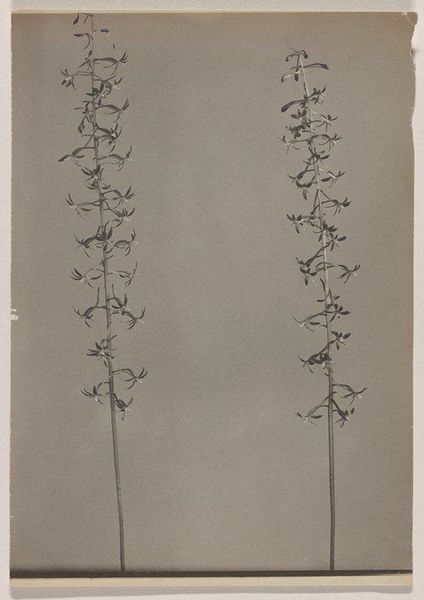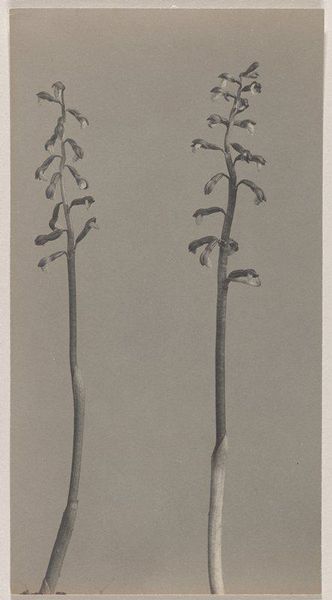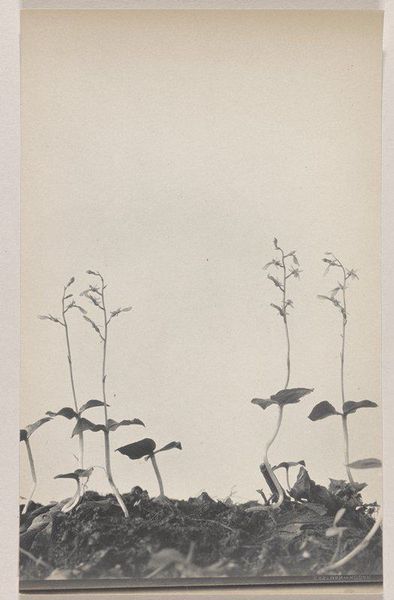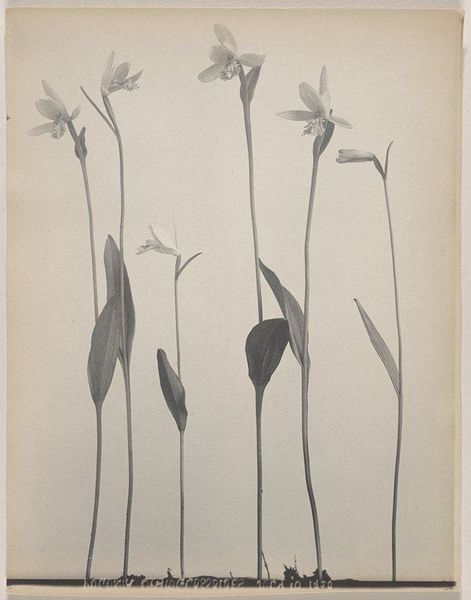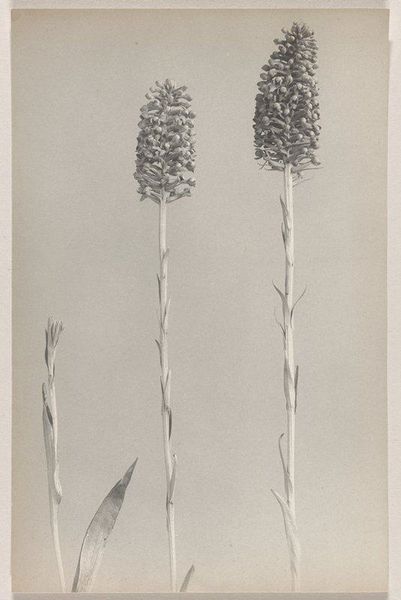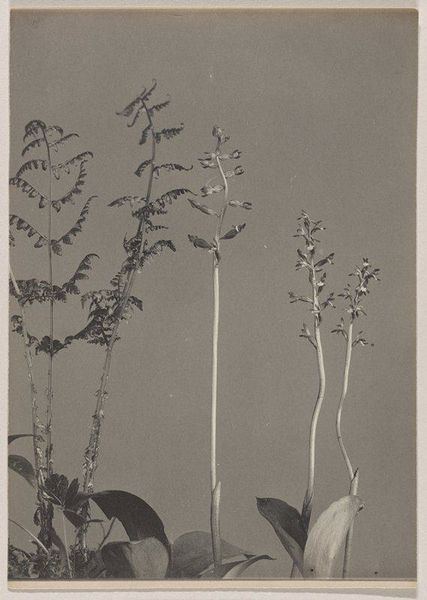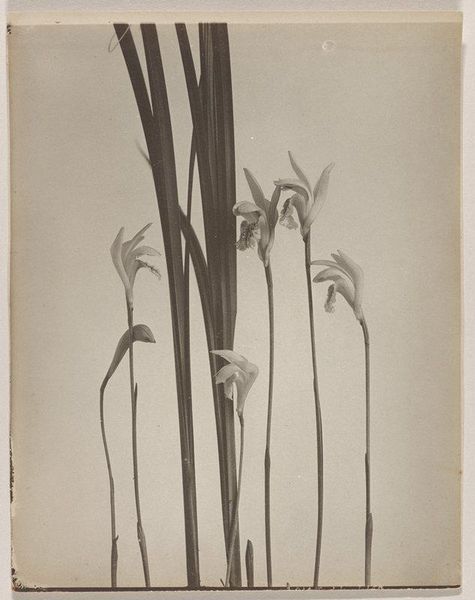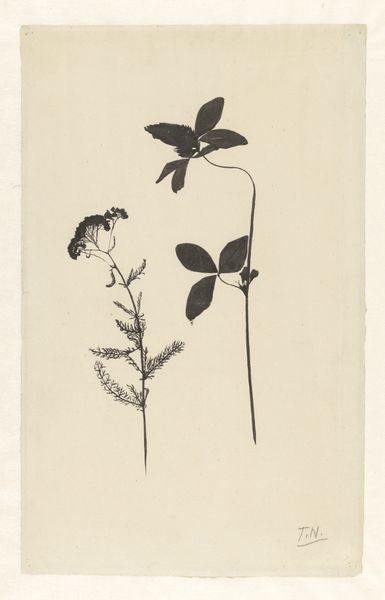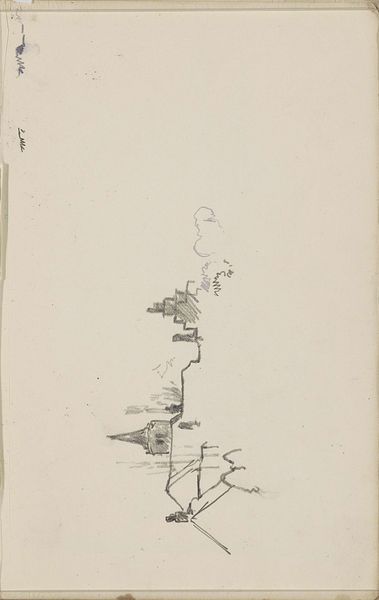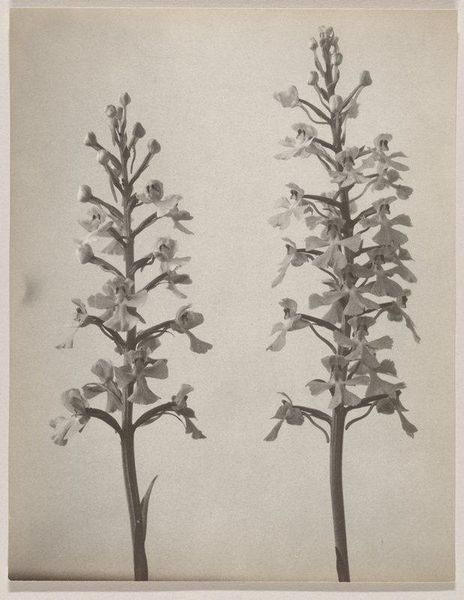
photography, gelatin-silver-print
#
photography
#
gelatin-silver-print
#
united-states
#
realism
Dimensions: 9 3/4 x 6 3/4 in. (24.77 x 17.15 cm) (image)10 x 6 3/4 in. (25.4 x 17.15 cm) (sheet)
Copyright: No Copyright - United States
Editor: This is Edwin Hale Lincoln’s gelatin-silver print, "Listera australis- Southern Twayblade," from 1931, currently housed in the Minneapolis Institute of Art. The muted tones and stark presentation give it a very serene, almost clinical, feeling. What do you see in this piece from a formal perspective? Curator: Focusing on the intrinsic elements, we see a tripartite composition. Three individual specimens are arranged against a pale backdrop, each a study in verticality and delicate structure. Note the artist’s deliberate placement; each stem possesses a unique curvature, implying an individual character despite the shared botanical classification. What do you make of the limited tonal range? Editor: I think the limited grayscale helps to really highlight the botanical structures of the plants. There's such a deliberate composition to each of the plants' arrangements! Curator: Precisely. It reduces the distraction and draws attention to the minute details of form, a fundamental principle of realism. Also, let's note the strategic deployment of negative space, its capacity to shape how the eye navigates. The void balances, and underscores, the photograph's essence. Does this calculated restraint suggest anything further? Editor: Perhaps it suggests a focus on the objectivity of scientific observation. By reducing distractions and tonal range, Lincoln presents these Twayblades as specimens in the purest form, almost as if they're prepared for dissection. Curator: An astute observation. Thinking more closely about its compositional devices can suggest intent in the piece. I think both of us learned a bit about perception today!
Comments
No comments
Be the first to comment and join the conversation on the ultimate creative platform.

